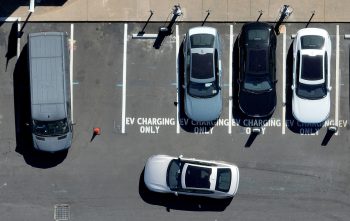One of the most promising technologies for making inexpensive but reasonably efficient solar photovoltaic cells just got much cheaper. Scientists at the University of Toronto have shown that inexpensive nickel can work just as well as gold for one of the critical electrical contacts that gather the electrical current produced by their colloidal quantum dot solar cells.
The change to nickel can reduce the cell’s already low material costs by 40 to 80 percent, says Lukasz Brzozowski, the director of the Photovoltaics Research Program within the research group of Professor Ted Sargent (ECE). The research was presented in the July 12, 2010 issue of Applied Physics Letters, published by the American Institute of Physics.
Quantum dots are nanoscale bits of a semiconductor material that are created using low-cost,high-throughput chemical reactions in liquid solutions. Since their properties vary according to their size, quantum dots can be made to match the illumination spectrum. Professor Sargent’s group has pioneered the design and development of quantum dot solar cells that gather both visible and infrared light. The researchers have reached a power-conversion efficiency as high as 5 percent and aim to improve that to 10 percent before commercialization.
At first, nickel did not appear to do the job. But adding just one nanometer of lithium fluoride between the nickel and the dots created a barrier that stopped the contamination, and the cell’s efficiency jumped back up to the expected level.
This is the latest of several recent solar-cell milestones by the Canadian researchers. “We have been able to increase dramatically the efficiency of our photovoltaics over the last several years and continue to hold the performance world records,” Professor Sargent said.



